What We Have
OBJECTS
Uniforms, medals, equipment, weapons, musical instruments, and souvenirs
ARCHIVES
Letters, memoirs, registers, official documents and private diaries.
PHOTOGRAPHS
Albums, formal portraits, landscapes, aerial photos and informal snapshots
ART
Prints, drawings, watercolours and oil paintings, prints and sketches
Objects
The objects within the collection are extremely diverse: Uniforms, medals, equipment, weapons, musical instruments, souvenirs from different parts of the world. Some items were officially issued, others collected by individuals.
Just some of the ways objects within the collection could be useful in your studies: construction and pattern making, materials, badge and insignia design, colours, ideas for creative writing or artwork. Be inspired!
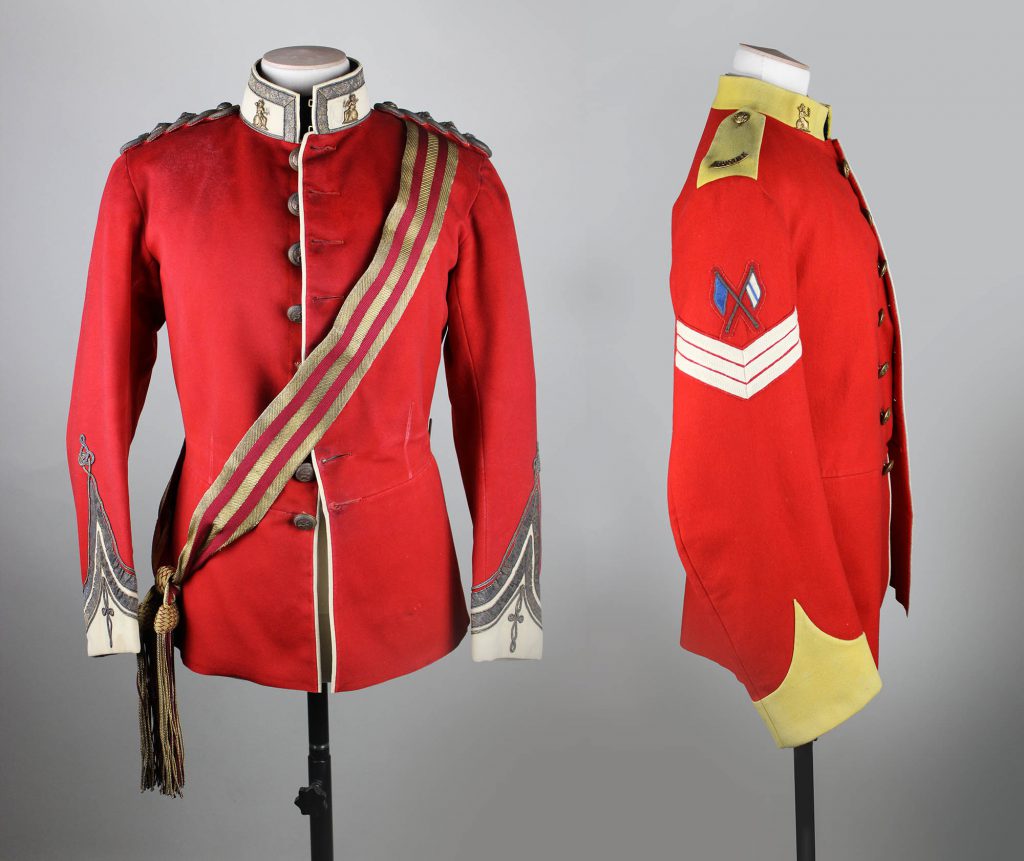
Left: Militia Officer’s full dress tunic, circa 1900 (NWHRM : 1539). Right: Full dress tunic of a Signalling Sergeant worn by C. Pryer, 1st Battalion, 1912-14 (NWHRM : 1244)

‘Clay figure of a Buddhist teacher from Tibet’ (NWHRM : 3072.2)
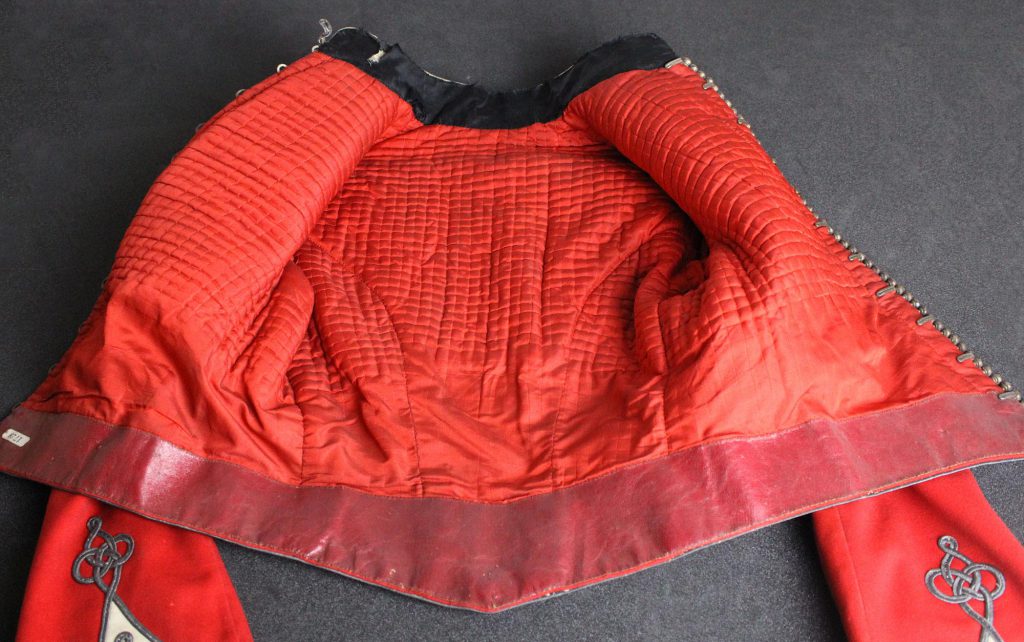
Quilted lining of an officer’s Mess Jacket, circa 1902 (NWHRM : 1728)

Powder flasks from Waziristan (NWHRM 3059)

Bandmaster’s sash (NWHRM: 1202)

German gas respirator, 1914-18 (NWHRM: 1380)
Archives
Letters, memoirs, registers, official documents and private diaries. There is a wide variety of material in the archive. It largely dates from the twentieth century, but there are items dating back to the formation of the Regiment in 1685.
The archive is particularly rich in material relating to the First World War and Far East Prisoners of War. There is also poetry written by soldiers. Most of the handwritten items in the archive have been transcribed for ease of access to the information they contain.
Just some of the ways the archive could be used: Inspiration for creative writing or artwork, historical research, general interest, handwriting and calligraphy, statistics, family history, graphic design.

Some archive objects contain immense amounts of information. This casualty book lists the details and wounds or sickness of 15,000 soldiers of the Norfolk Regiment. (NWHRM: 6752)

The Museum holds First World War Battalion War Diaries for all the overseas service battalions.

Nominal Roll of men of the Regiment on their departure to Ireland 1689, just after it was formed. (NWHRM : 89)
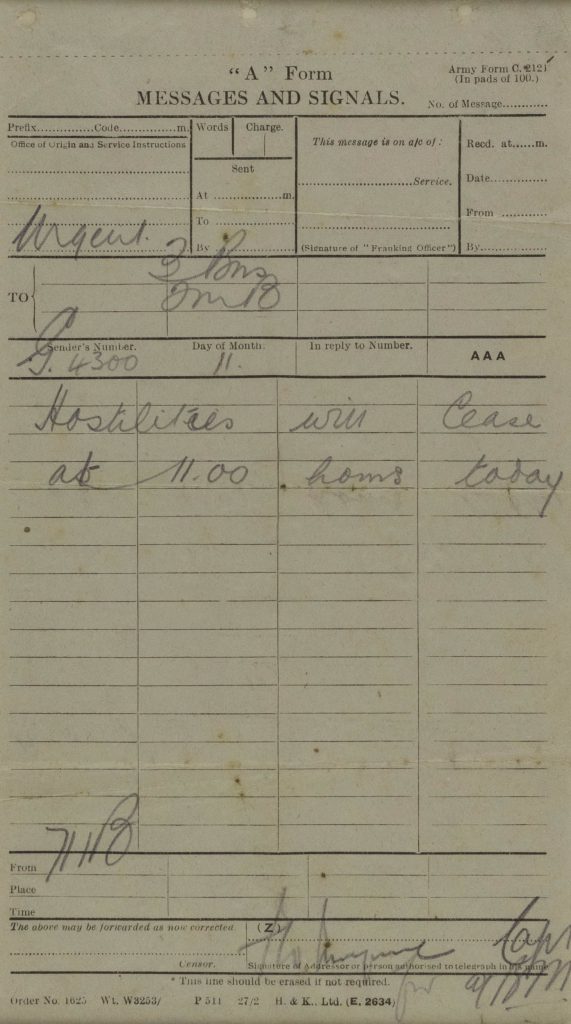
Signal announcing the end of the hostilities, 1918. Received by Major F.R. Day. (NWHRM: 6307)
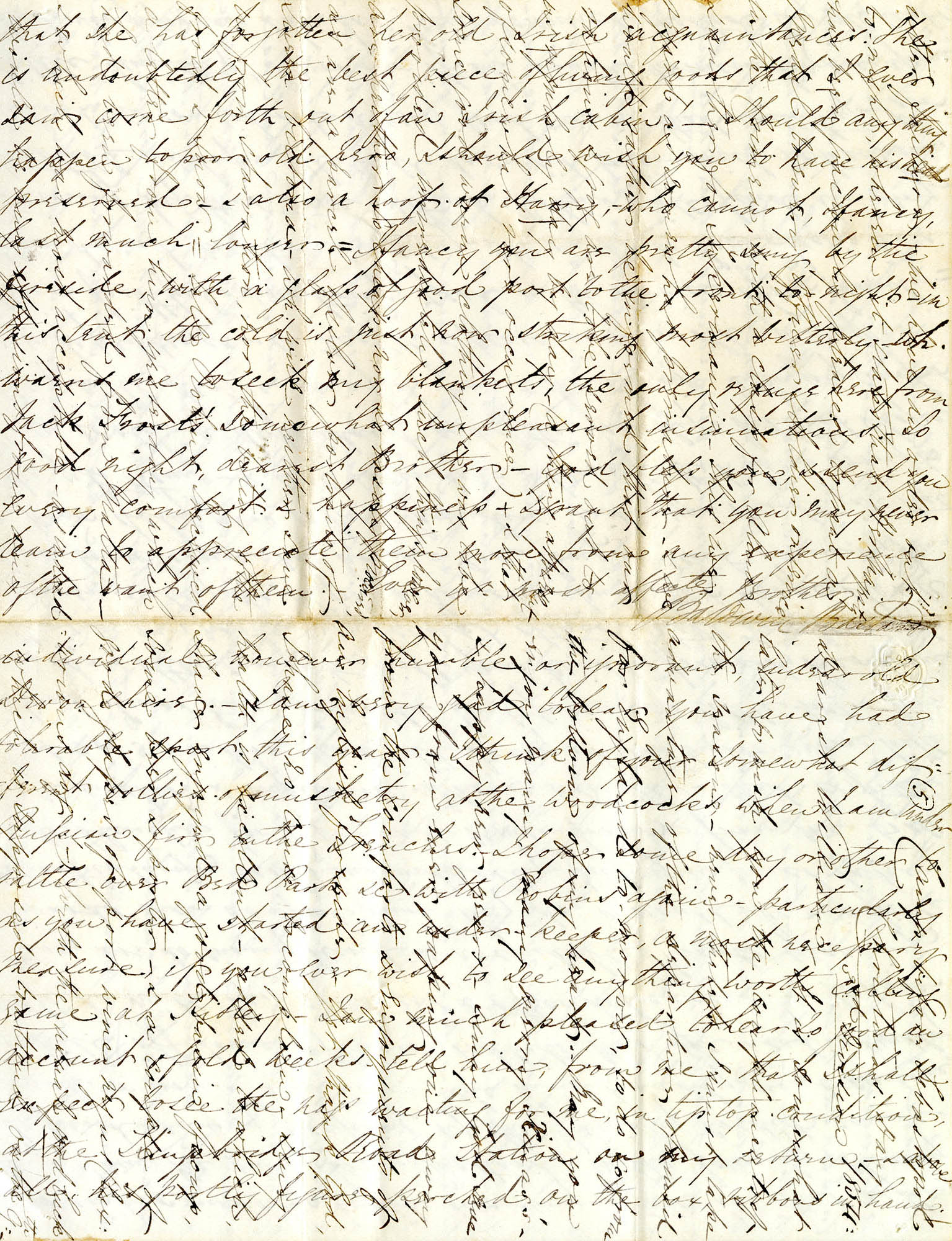
Archives can be as interesting for their looks as their content. This letter was sent from the Crimea, Christmas day, 1854. (NWHRM : 3241)
Photographs
There are about 10,000 photographs in the collection, some within albums. They range from formal group portraits, to landscapes, and from informal snapshots taken by individual soldiers to the official record of events.
Most of the photograph albums are stored for us by the Norfolk Record Office, but individual images are kept in the Museum archive. The majority of the photographs have been digitally scanned, providing ease of access
Just some of the ways the photographs and images could be used: Research, understanding photographic techniques, inspiration for creative writing or artwork, the study of uniform, landscapes, portraiture, incorporating images into new artwork.
Students are welcome to use our images in their work for free.

The Gymnastic Squad, Belgaum, India, 1912 (NWHRM: 1000.35)

Lance Corporal Waters, killed 1940. (NWHRM: 4089.5.22)

2nd Battalion Norfolk Regiment Pioneers in India. They hold the tools of the stone masons trade, alongside completed gravestones of men of the Regiment, 1912. (NWHRM: 5369.1)

Aerial photograph of Foret de Nieppe, 1918. (NWHRM : 5495)
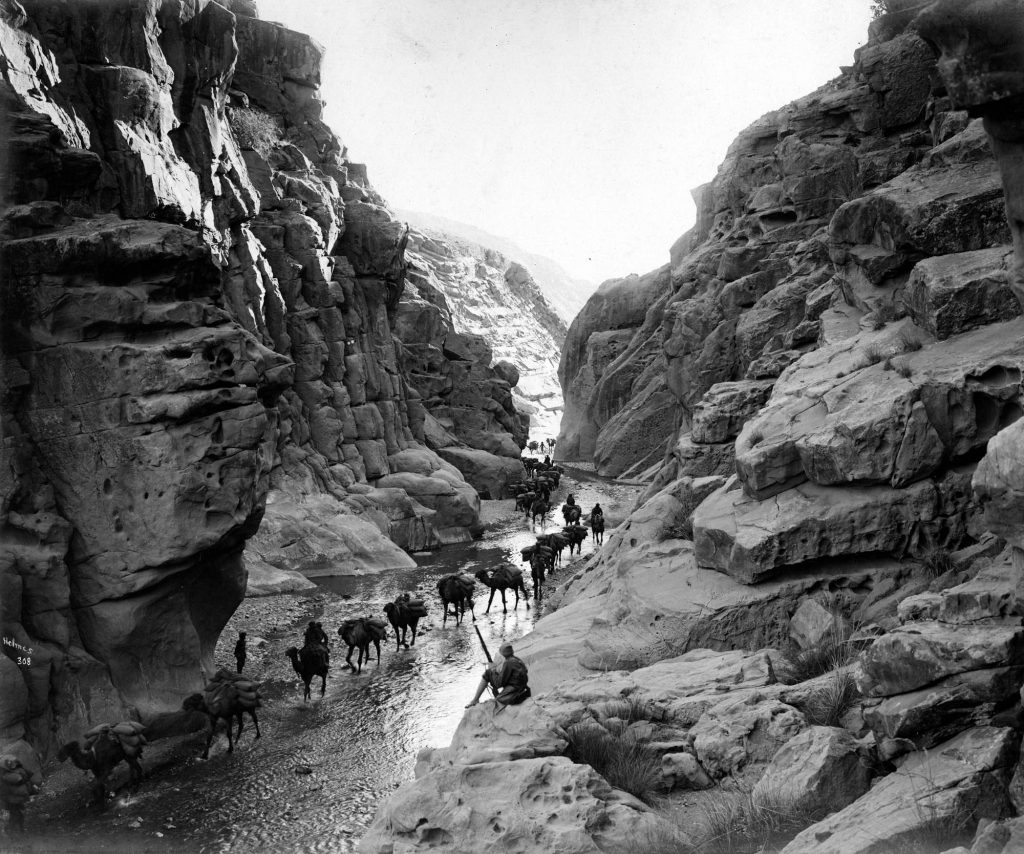
Camel Convoy, Waziristan, 1920’s. (NWHRM : 1013.10)

Officers of the 9th Battalion, France 1917 (NWHRM : 6102)
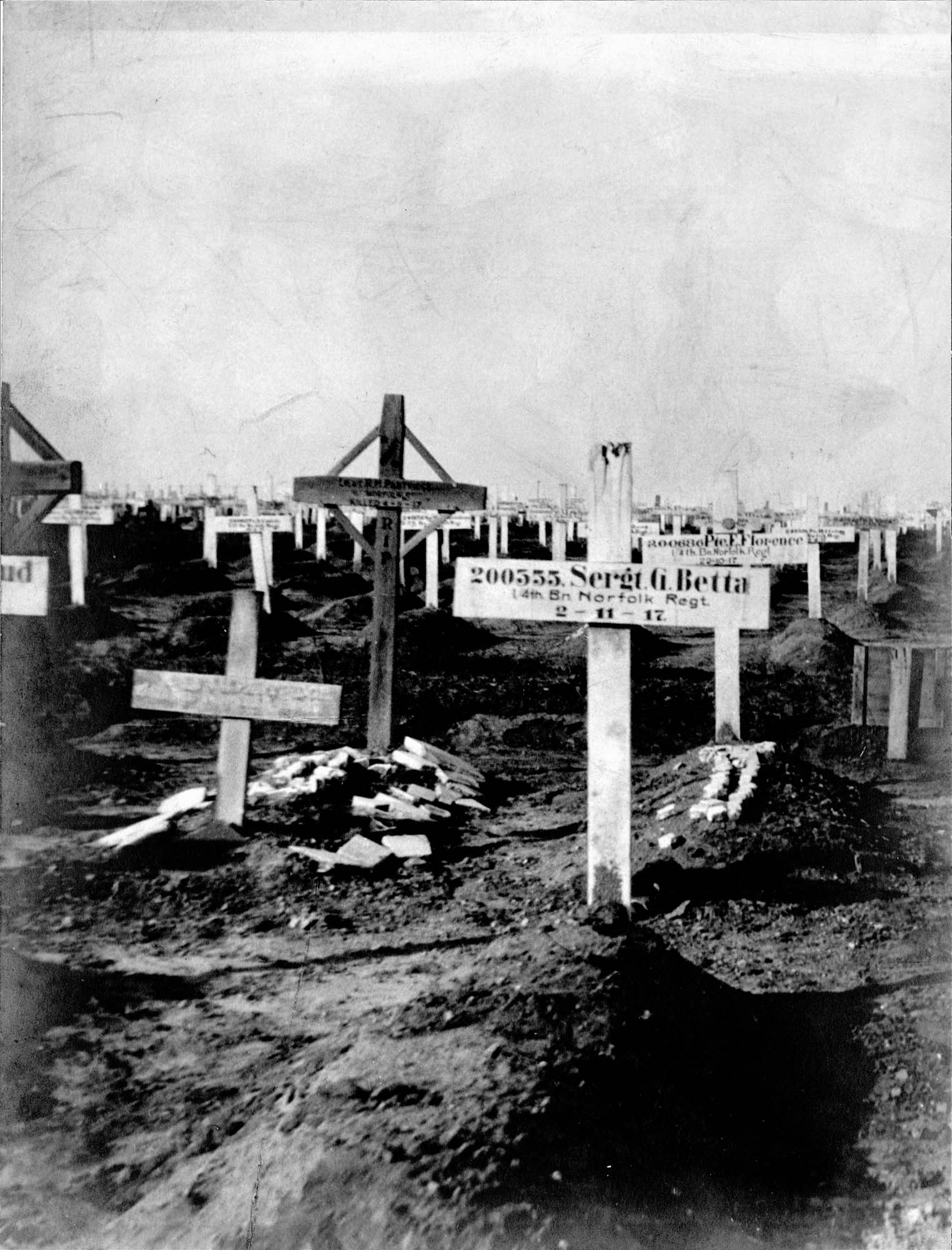
Gaza war cemetery before the War Graves Commission took it over. (NWHRM: 6757)
Art and Decorative Art
Prints, drawings, watercolours and oils are all represented in the collection along with examples of regimental silver. Commemorative items such as medals often have interesting designs.
Just some of the ways the art and decorative art collection could be used: Study of technique, topographical drawing, portraiture, design, satirical cartoons, inspiration for narratives.

Watercolour of 9th Foot encampment at Fort Glamorgan South Africa 1869-70 (NWHRM : 2579c)

Norfolk Volunteers Passing their Shooting test on the Rifle Ranges at Great Yarmouth by S J Batchelder, 1900. (NWHRM : 5013)

Pen and ink sketch of the Citadel Corfu, from Vido, 1858-64 (NWHRM: 2553)

An officer of the 9th East Norfolk Regiment, about 1800 (NWHRM: 5357)

‘Uniform suggested for the future for Church Parades of the Gallant Yarmouth Volunteers’ (NWHRM: 5276.1)

Detail of Burmese silver bowl circa 1850. (NWHRM : 3248)
How to Access the Collection
Visit the Royal Norfolk Regimental Museum
We have displays at Norwich Castle Museum & Art Gallery, it is free to UEA, NUA, ACC Norwich and City College students.
Take a look on-line.
You can view most of our First World War archive at The Ogilby Muster
You can do a basic search of the whole collection here Collections Search - Collections at norfolk.gov.uk
Talk to the Curator
For general enquiries and more complex searches it is best to email the Curator here. You will be able to make an appointment to view the reserve collection using this email as well.
The reserve collection is in The Castle Study Centre, Shirehall, Market Avenue, Norwich NR1 3JQ.
We look forward to seeing you!

